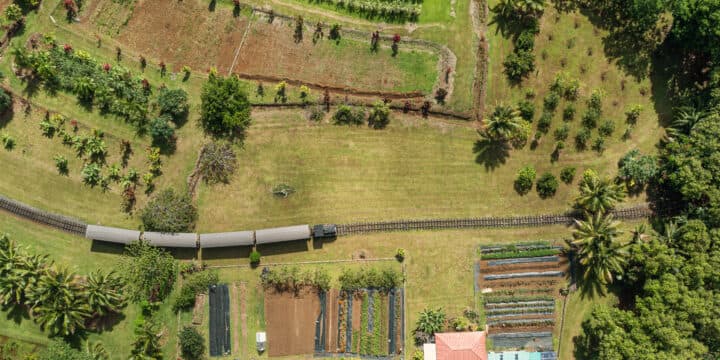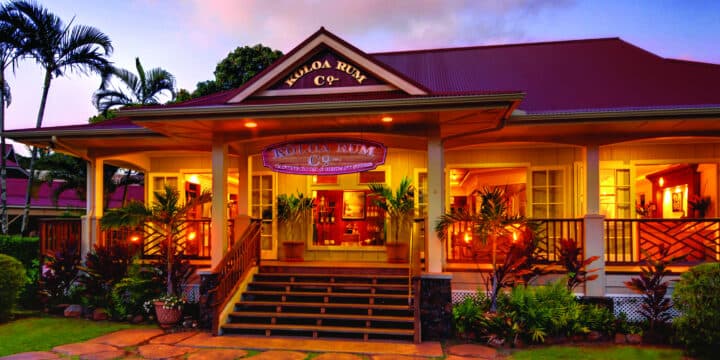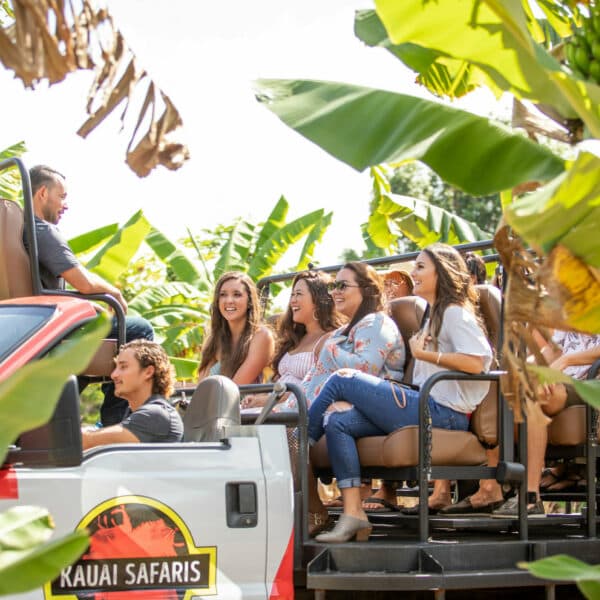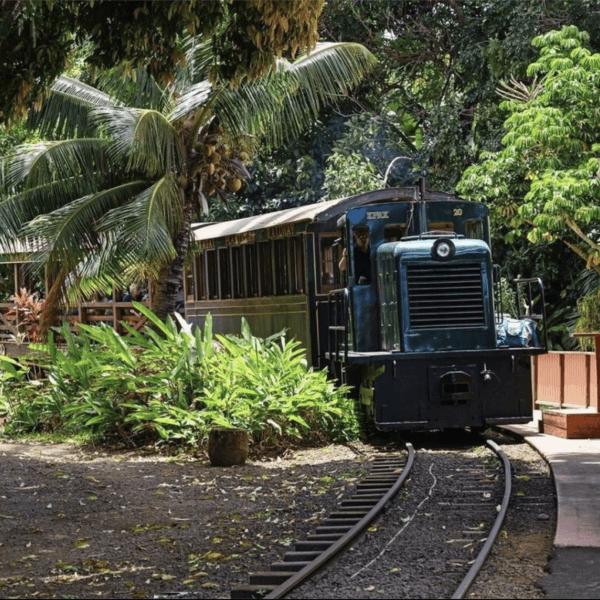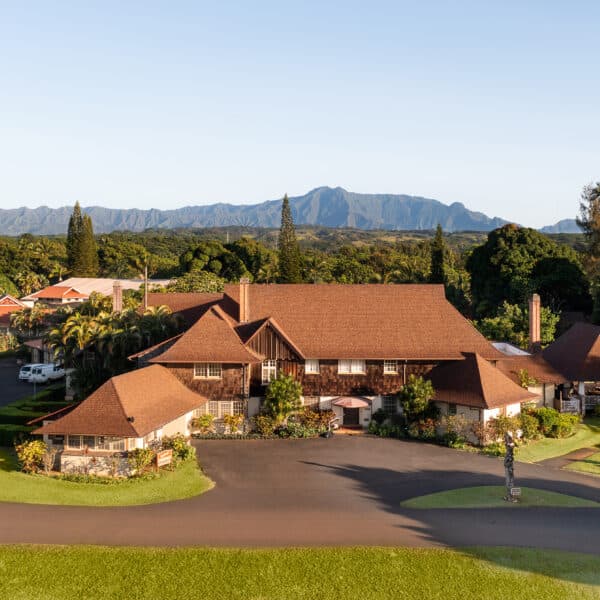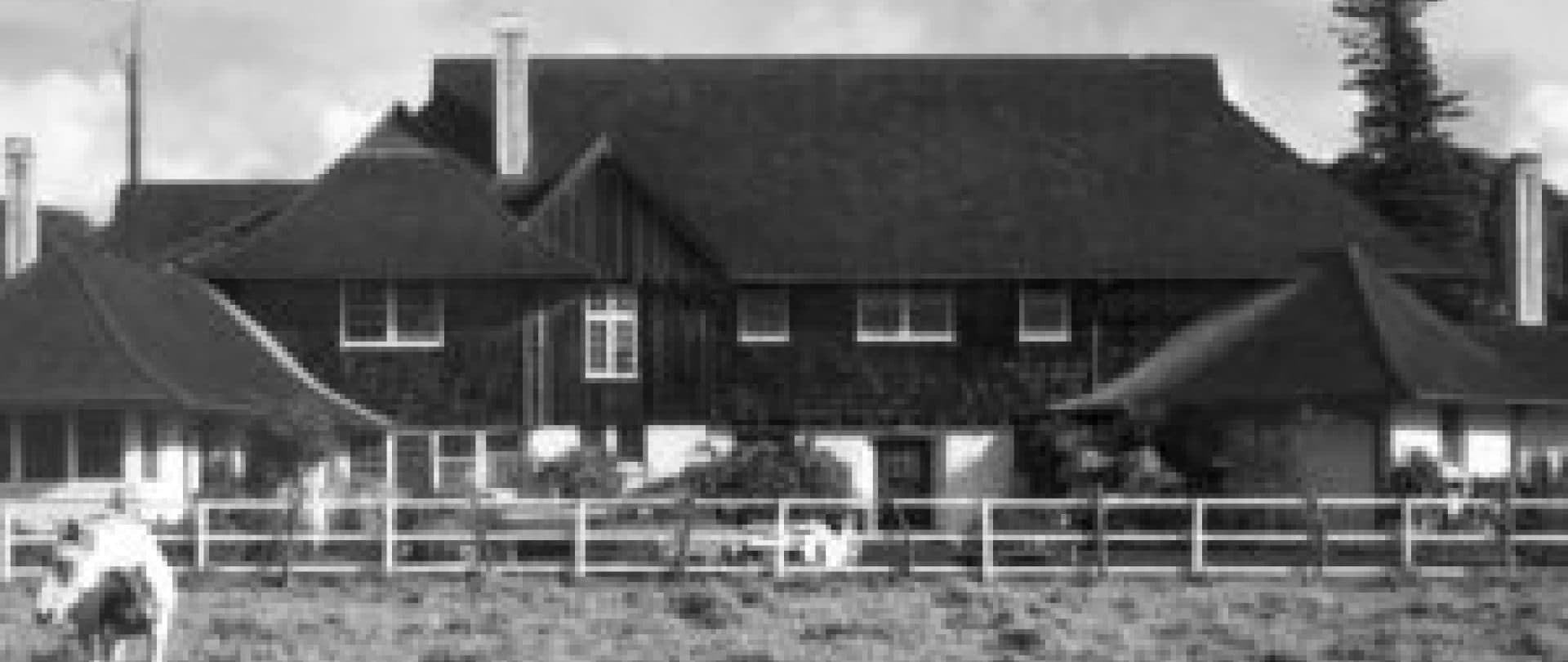
Timeless Treasure
An Agricultural Past Remains Firmly Rooted at Kilohana Plantation Estate
BY Mary Troy Johnston
With the decline and eventual end of the sugar industry in Hawai‘i (Alexander & Baldwin was the last company in the state to cease sugarcane farming in 2016.), a watershed moment was presented to plantation owners who had to look to alternative uses of their land. Some landowners leased their agriculturally zoned land to companies and small-scale farmers, while others, like Kilohana Plantation Estate, reinvented themselves to serve the booming tourism industry. Rooted in Kaua‘i’s agricultural history, today, the 35-acre Kilohana Plantation Estate welcomes locals and visitors to experience fine dining, shopping, live entertainment, and tours of their still operating farm.
When Captain Cook arrived on Kaua‘i in 1778, patches of sugarcane (kō in Hawaiian) were already established. Popular with Hawaiians as a food staple and medicine, Cook found a use for sugarcane as well, brewing a beer (to the distaste of his crew), hoping it might provide a good defense against scurvy. It was over half a century before the product—sugar—was commercially mass produced in Hawai‘i. 1835 was the year Hawai‘i established its first sugar plantation when Ladd & Company was able to secure the first land lease ever granted for acreage and built the island’s first sugar mill in Kōloa, Kaua‘i. With its abundant rain, amenable climate, and rich soil, Kaua‘i offered a promising future for sugar. Eventually, ten sugar plantations dotted the island; hence, King Sugar became the dominant industry and biggest employer on the island.
Abner Wilcox and his wife Lucy traveled from New England in 1837 to work as missionary teachers in Hawai‘i, first in Hilo on the Island of Hawai‘i and eventually in 1846 to Hanalei on Kaua‘i. Their heirs went on to become influential in politics and especially successful in the founding of the sugar industry on the island. Their son, George Norton Wilcox, acquired Grove Farm, the farm he had managed, then leased in 1864 and purchased in 1870, which he left to his nieces and nephews. A trained engineer educated at Sheffield Scientific School, now Yale, George was able to accomplish the feat of building the infrastructure to get the much-required water from the mountains to the farm for sugar production. At its peak, the plantation reached across 22,000 acres. The next century saw Gaylord Parke Wilcox relocate to Kaua‘i to take up residence at Kilohana, a family property previously owned by Albert Wilcox. At the site of the old family home that had been torn down, in 1936 he built the largest mansion on the island at the time and, also, became president of his family’s Grove Farm where he had grown up with five other siblings.
As sugar production shifted to places with cheaper labor, the sugar barons on Kaua‘i could not keep up. Eventually, the industry died, leaving a huge vacuum on the island in terms of properties, housing, and infrastructure lying idle. Also, the stream of income was no longer coming in to finance the lavish lifestyle of the planters. The owners of the plantations had to find other uses for their holdings. After Gaylord’s death in 1970, his grandson, Gaylord Hart Wilcox, and granddaughter, Patsy Sheehan, together decided they wanted to keep the house in the family. Hale ‘Ōpio leased the plantation home at Kilohana as a safe home for troubled youth. In 1985 it got yet another lease on life when a partnership entered a long-term agreement to restore the plantation to its former glory and protect a historical property that yielded so much insight into the ways things were done and looked in a previous era. Part of the vision was to open the stately home and grounds for all to see and enjoy, which was a special adventure for locals—most of whom had hardly ever entered beyond the lava post entrance. If the property became beloved by locals, they would be sure to lead visitors there!
Meticulous attention was paid to heeding the architectural style and continuing with period furnishings. Original family pieces can still be seen in the living and dining rooms. Photographs of the original interiors provided guidance for the restorers who looked everywhere to stage the home so that it would be a true reflection of the past. Indeed, one of the Wilcox relatives was surprised to see a sideboard in Kilohana that was strikingly like the one that has remained in the Wilcox family for generations. Kilohana was filled with rare objects that bedazzled—large calabashes (hand-carved containers made from exotic local woods of Hawai‘i), ornately upholstered couches, hand-dyed and knotted Persian carpets, masterfully rendered oil paintings, and rarities out of every corner of the eye. The architectural style of the house is as alluring, attributed to the Tudor period but also an example of the “territorial style” (dating to the period when Hawai‘i was a territory of the United States) in which the connection between outdoors and indoors is closely nurtured. A hallmark of Kilohana is the access to views of the grounds through large glass sliding doors. Even today, both the architecture and the furnishings of the house combine to reflect the cosmopolitan culture that immigration brought to the island during the Plantation Era.
The grounds held their own promise, especially as Albert and Gaylord in the previous century had engaged in an array of agricultural and animal husbandry activities to sustain their lifestyle. Gaylord and his wife, Carol Wilcox, conveyed their vision to the Kilohana partners in terms of continuing the homesteading legacy. Fred Atkins, one of the partners who shared the owners’ vision, noted that they provided a property layout showing the locations in the past of “flower gardens, milking stalls, piggeries, and fruit gardens.” 2003 was a watershed year for agricultural planning when the partners were able to lease 67 acres from Lihue Land Company (formerly in sugar) and begin thinking in more expansive terms.
The plantation now boasts enough space for a variety of animals, cattle, pigs and horses, and farmland for experiments in traditional and new exotic fruits, hardwoods, and other crops. To support agriculture on the island, Kilohana grants small farmers one to five acres and the option to sell their produce back to the plantation restaurant or farmers’ market. With the construction of a 2.5-mile narrow gauge railroad track and acquisition of a circa-1948, diesel-electric powered engine and cars with mahogany interiors, visitors can now tour the grounds true to the style of the plantation past.
Sugar is currently making its appearance at Kilohana, but in a different form and to the total delight of visitors. Kōloa Rum, a single-batch, craft distiller and bottler of premium Hawai‘i rums, set up shop and a tasting room at Kilohana in September 2009 at the same time the company started producing and bottling rum made from sugarcane. Over a million people have attended the tastings, now averaging several hundred a day. The plantation’s newest addition to their onsite activities is an outdoor tasting called the Kauai Rum Safari tour that features farm-to-glass cocktails made with Kōloa Rum and includes a 2-hour exploration of the exquisite landscape, their fruit and vegetable orchards, tropical forest, and valley of the now 105-acre estate.
For a different kind of historical and cultural experience, Kilohana’s Lū‘au Kalamaku is unique because of its location, with the beautiful estate as a backdrop to the full, theatrical depiction of the Polynesians’ migration from Tahiti to Kaua‘i, and dinner service before the show, which includes some Kilohana-grown food and as many Kaua‘i products as possible.
Kilohana Plantation Estate is also fulfilling another part of its vision—to be a showcase for agritourism—demonstrating to visitors agriculture from the past, but also the potential of agriculture on Kaua‘i. Visitors can see for themselves how industrial agriculture has given way to artisan agriculture on Kaua‘i. They can take a ride on the historic plantation railway or a walking tour and gain insight into agriculture old (for example, sugar cane and taro) and agriculture new (including “experimental plantings of longan, cashew, hybrid mango, noni and atemoya”). In addition to tasting the bounty of the farm, guests get to interact with the farm animals. It is only a short stroll to the Plantation House by Gaylord’s, where guests will find that the restaurant has utilized the exotic fruits for the daily special mojito or juiced the hand-cut sugar cane for the island’s best mai tai. The days are long gone since local boys chased the train for burnt cane, though the distant sound of Kilohana’s Plantation Train still signals bounty—indeed an incredible agricultural bounty.
You May Also Like
Features
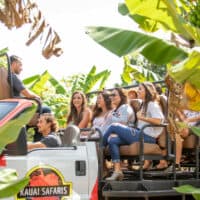
See + Do
Kauai Safaris
Lihue

Eat + Drink
The Plantation House by Gaylords
Lihue
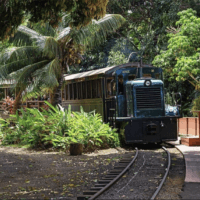
See + Do
Historical Train Ride
Lihue
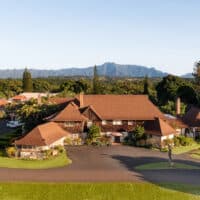
Shop + Style




